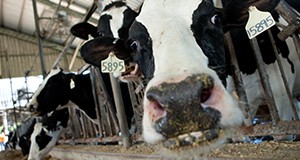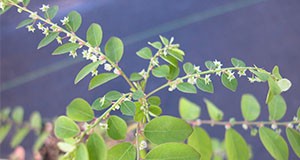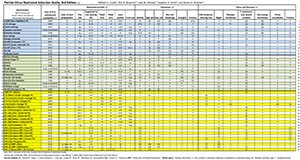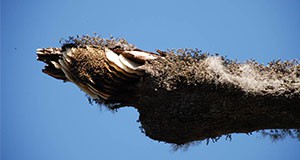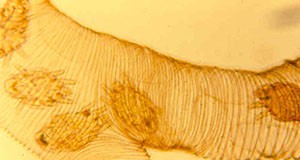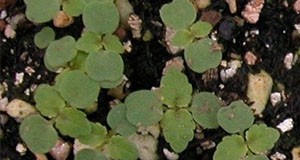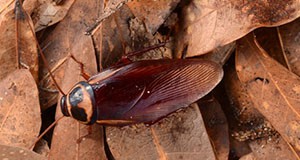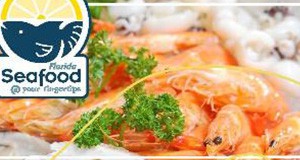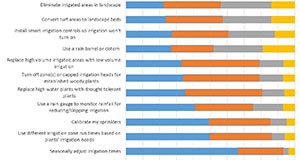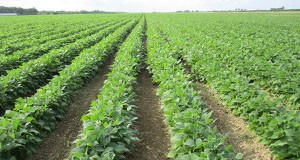As of 2012, tawny crazy ants have invaded 24 counties in Florida, parts of southeast Texas, and other areas of the southeastern U.S. The tawny crazy ant is considered a series pest. This species infests buildings and greenhouses, attacks crops, domestic animals, honeybee hives, displaces native ant species, and disrupts electrical equipment. This 3-page fact sheet covers the tawny crazy ant’s distribution, description, colonies, feeding habits, and pest status and control. Written by S. K. Hill, R. W. Baldwin, R. M. Pereira, and P. G. Koehler, and published by the UF Department of Entomology and Nematology, October 2013.
http://edis.ifas.ufl.edu/in1076
Author: Sam Grenrock
Can Calcium Propionate Help Maintain Calcium Concentrations and Prevent Metritis in Dairy Cows with Dystocia?
Studies have suggested that giving dairy cows supplemental calcium may reduce the incidence of metritis. This study tested this hypothesis with cows at the UF Dairy Unit and found that calcium supplements actually did not benefit postpartum health and are not recommended as means of metritis prevention. This 3-page fact sheet was written by Klibs N. Galvao, Mauricio Benzaquen, and Carlos A. Risco, and published by the UF Department of Veterinary Medicine—Large Animal Clinical Sciences, June 2015.
http://edis.ifas.ufl.edu/vm223
Biology and Management of Long-Stalked Phyllanthus in Ornamental Crop Production
This 5-page fact sheet discusses the characteristics of long-stalked phyllanthus and explains how to control its growth in a nursery environment. Written by Theresa Chormanski, Chris Marble, and Lyn Gettys, and published by the UF Department of Environmental Horticulture, April 2015.
http://edis.ifas.ufl.edu/ep518
Florida Citrus Rootstock Selection Guide, 3rd Edition
Information about citrus rootstocks has become an important part of understanding and managing citrus greening (Huanglongbing or HLB). This selection guide covers 20 characteristics of 45 citrus rootstocks and explains its methodology in detail. This 3-page fact sheet was written by William S. Castle, Kim D. Bowman, Jude W. Grosser, Stephen H. Futch, and James H. Graham and published by the UF Department of Horticultural Sciences, May 2015.
http://edis.ifas.ufl.edu/hs1260
African Honey Bee: What You Need to Know
African honey bees entered the United States in the early 1990s and have since spread throughout the Southwest and Southeast, including parts of Florida. Compared to European bees, African bees are highly aggressive when disturbed and are more likely to sting humans and animals. This 6-page fact sheet covers the history and distribution of African honey bees in the Americas and explains how beekeepers and residents can manage their interactions with these bees. Written by H. Glenn Hall, Catherine Zettel-Nalen and James D. Ellis, and published by the UF Department of Entomology and Nematology, December 2014. http://edis.ifas.ufl.edu/mg113
How to Dissect Honey Bees (Apis mellifera L.) to Detect Tracheal Mites (Acarapis woodi Rennie)
Tracheal mites are parasites of the western honey bee and negatively impact the health and productivity of an infested colony. This 6-page fact sheet details the method of dissecting honey bees in order to diagnose tracheal mites. Written by John Bonkowski, Ashley N. Mortensen, and James D Ellis, and published by the UF Department of Entomology and Nematology, January 2015.
http://edis.ifas.ufl.edu/in1072
Biology and Management of Mulberry Weed (Fatoua villosa) in Ornamental Crop Production
This 4-page fact sheet discusses the characteristics of mulberry weed (Fatoua villosa) and explains how to control its growth in a nursery environment. Written by Chris Marble and Shawn Steed, and published by the UF Department of Environmental Horticulture, April 2015.
http://edis.ifas.ufl.edu/ep517
Australian cockroach Periplaneta australasiae Fabricius (Insecta: Blattodea: Blattidae)
Australian cockroaches are the most common outdoor cockroach in southern Florida. Though they typically stay outdoors, Australian cockroaches may also venture inside and live among humans. This 4-page fact sheet covers the Australian cockroach’s distribution and habitat, biology, medical risks to humans, and management as a pest. Written by Shiyao Jiang and Phillip E. Kaufman, and published by the UF Department of Entomology and Nematology, April 2015.
http://edis.ifas.ufl.edu/in1088
Seafood Knowledge, Perceptions, and Use Patterns in Florida: Findings from a 2013 Survey of Florida Residents
Over the past few years, consumers have begun to pay more attention to the nutritional benefits, sustainability, and environment impact of consuming seafood. However, media coverage of these concerns may leave consumers confused and uncertain about how they should incorporate seafood into their diets. In 2013, a survey was conducted to better understand Florida seafood consumer preferences, perceptions, and concerns. This 4-page fact sheet explains the survey’s findings and how they might help Extension deliver effective seafood-based education to Florida residents. Written by Lisa Krimsky, Charles Adams, and Bryan Fluech, and published by the UF Department of Food and Resource Economics, May 2015. http://edis.ifas.ufl.edu/fe965
Encouraging Landscape Water-Conservation Behaviors #1: Tailoring Programs To Florida Residents Who Use Irrigation in the Home Landscape
To better promote water-conservation practices among homeowners who irrigate their landscaping, Extension professionals must first have a clear understanding of this target audience’s habits, beliefs, and needs. This 10-page fact sheet recommends that Extension professionals analyze their audiences through several factors, including their interest in water conservation and knowledge of water issues and laws. Written by Laura A. Warner, Emmett Martin, Alexa Lamm, Joy Rumble, and Randall Cantrell, and published by the UF Department of Agricultural Education and Communication, May 2015. http://edis.ifas.ufl.edu/wc199
Snap Bean Soil Fertility Program in Miami-Dade County
In terms of acreage, snap beans are the most commonly grown vegetable in Miami-Dade County. This 2-page facts sheet outlines the impact of fertilizer use and local weather and soil on snap bean production in this region. Written by Monica Ozores-Hampton, Qiang Zhu, and Yuncong Li, and published by the UF Department of Horticultural Sciences, May 2015. http://edis.ifas.ufl.edu/hs1261
Rose Rosette Disease: A New Disease of Roses in Florida
Rose rosette disease is an incurable, destructive disease that affects both wild and cultivated roses. Over the past several decades, the disease has spread over much of the U.S., though it was first observed in Florida in 2013. This 6-page fact sheet describes the symptoms and diagnosis of the disease, as well as the cultural, chemical, and, possibly, biological controls that can minimize its spread. Written by Binoy Babu, Mathews L. Paret, Tim Schubert, Carlye Baker, Gary Knox, Fanny Iriarte, James Aldrich, Laura Ritchie, Carrie L. Harmon, and Svetlana Y. Folimonova, and published by the UF Department of Plant Pathology, May 2015.
http://edis.ifas.ufl.edu/pp317

